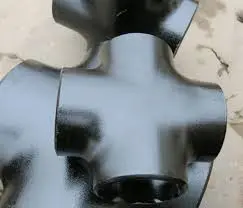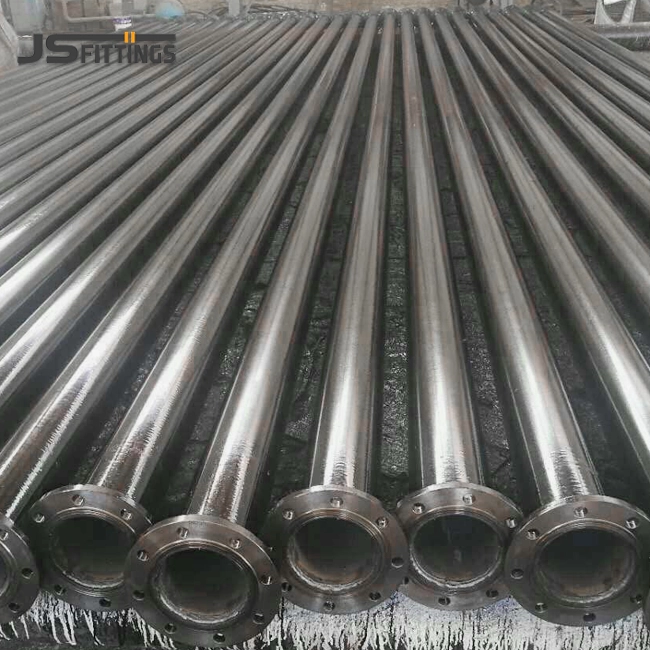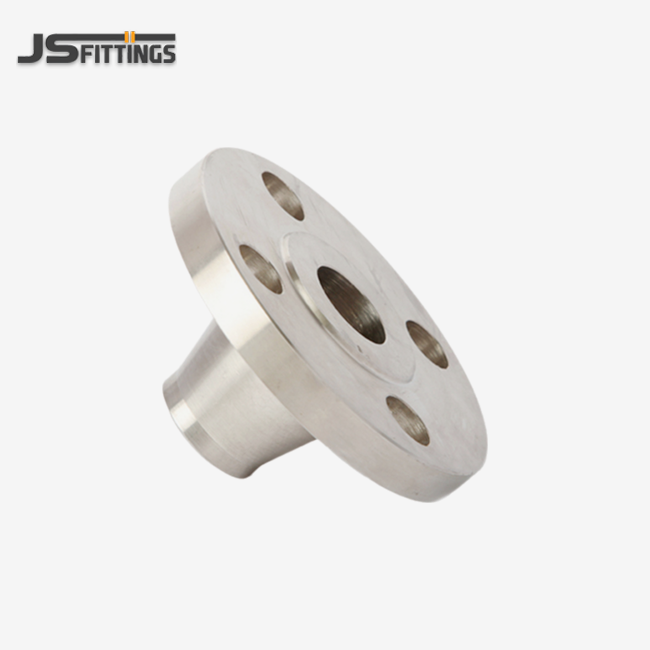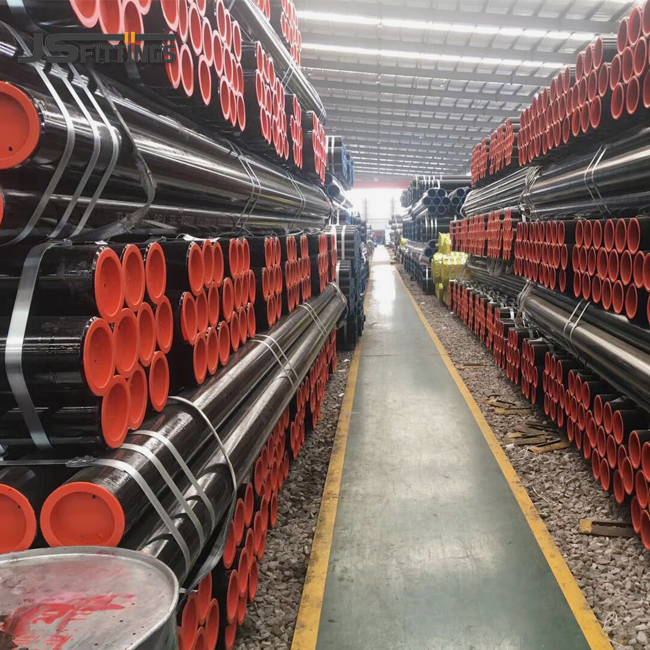Material Selection: Corrosion Resistance Matters
When it comes to choosing the right butt weld cross fittings for oil refineries, material selection is paramount. The harsh conditions present in refinery environments demand fittings that can withstand corrosive substances, high temperatures, and extreme pressures. Let's explore the key considerations for selecting materials that offer superior corrosion resistance:
Stainless Steel: The Gold Standard
Stainless steel is often the go-to material for butt weld cross fittings in oil refineries due to its exceptional corrosion resistance. Different grades of stainless steel offer varying levels of protection:
- 316/316L: Ideal for environments with high chloride content
- 304/304L: Suitable for less aggressive conditions
- Duplex and Super Duplex: Offer enhanced strength and corrosion resistance for extreme applications
Alloy Steel: Balancing Strength and Corrosion Resistance
For applications requiring high strength and moderate corrosion resistance, alloy steel butt weld cross fittings can be an excellent choice. Common alloy steel grades include:
- Chrome-Moly (e.g., P11, P22, P91): Suitable for high-temperature services
- Low-Alloy Steel (e.g., A234 WPB): Offers improved mechanical properties over carbon steel
Carbon Steel: Economic Option for Less Corrosive Applications
In areas of the refinery where corrosion is less of a concern, carbon steel butt weld cross fittings can provide a cost-effective solution. However, proper coating and maintenance are essential to extend their service life.
When selecting materials, it's crucial to consider factors such as the specific chemicals present in the process streams, operating temperatures, and pressure requirements. Consulting with experienced manufacturers can help ensure you choose the optimal material for your refinery's unique needs.
Size and Schedule: Matching Refinery Specifications
Selecting the correct size and schedule for butt weld cross fittings is critical to ensure proper flow rates, pressure ratings, and compatibility with existing piping systems in oil refineries. Let's delve into the key aspects of sizing and scheduling:
Understanding Nominal Pipe Size (NPS)
Butt weld cross fittings are typically specified by their nominal pipe size (NPS), which corresponds to the inner diameter of the connected pipes. Common sizes in refineries range from 1/2" to 24" NPS, with larger sizes available for specific applications. It's essential to match the NPS of the fittings to your piping system to ensure proper fit and function.
Pipe Schedule: Balancing Wall Thickness and Pressure Ratings
The pipe schedule determines the wall thickness of the fitting, which directly impacts its pressure-bearing capacity. In oil refineries, common schedules include:
- Schedule 40: Standard wall thickness for moderate pressure applications
- Schedule 80: Thicker walls for higher pressure services
- Schedule 160 and above: For extremely high-pressure applications
When selecting the appropriate schedule, consider factors such as:
- Operating pressure of the system
- Temperature fluctuations
- Potential for pressure surges or hydraulic shock
Custom Sizing Options
In some cases, standard sizes may not meet the specific requirements of your refinery. Many reputable manufacturers offer custom sizing options for butt weld cross fittings, including:
- Reducing crosses: Different outlet sizes to accommodate changes in pipe diameter
- Large-diameter fittings: For main distribution lines or headers
- Special wall thicknesses: To meet unique pressure or corrosion allowance requirements
When specifying custom sizes, it's crucial to work closely with the manufacturer to ensure the fittings meet all relevant industry standards and your refinery's specifications.
Cost-Benefit Analysis: Long-Term Value of Quality
While the initial cost of butt weld cross fittings is an important consideration, it's essential to evaluate the long-term value and benefits of investing in high-quality components. Let's examine the key factors to consider in your cost-benefit analysis:
Initial Investment vs. Lifecycle Costs
When comparing butt weld cross fittings, consider the following aspects:
- Material quality: Higher-grade materials may have a higher upfront cost but offer extended service life and reduced maintenance needs.
- Manufacturing precision: Well-crafted fittings can minimize the risk of leaks and failures, reducing potential downtime and repair costs.
- Certification and compliance: Fittings that meet industry standards and have proper documentation can save time and resources during inspections and audits.
Performance and Reliability Benefits
Investing in high-quality butt weld cross fittings can yield significant benefits:
- Improved safety: Reduced risk of leaks and failures translates to enhanced workplace safety and environmental protection.
- Increased uptime: Reliable fittings minimize unplanned shutdowns and maintenance intervals, maximizing refinery productivity.
- Enhanced efficiency: Properly sized and manufactured fittings optimize flow characteristics, potentially improving overall process efficiency.
Total Cost of Ownership Considerations
When evaluating the true cost of butt weld cross fittings, factor in:
- Installation costs: High-quality fittings may be easier to install, reducing labor and equipment costs.
- Maintenance requirements: Superior materials and construction can lead to less frequent inspections and replacements.
- Energy efficiency: Well-designed fittings can minimize pressure drops, potentially reducing pumping costs over time.
- Downtime costs: Consider the financial impact of potential shutdowns due to fitting failures or replacements.
By carefully weighing these factors, you can make an informed decision that balances initial costs with long-term value, ensuring the optimal choice of butt weld cross fittings for your oil refinery's needs.
Conclusion
Selecting the right butt weld cross fittings for oil refineries is a critical decision that impacts safety, efficiency, and long-term operational success. By carefully considering material selection, size, and schedule specifications, and conducting a thorough cost-benefit analysis, you can ensure that your chosen fittings meet the demanding requirements of refinery environments while providing lasting value.
For oil and gas industry professionals seeking high-quality butt weld cross fittings that meet the most stringent standards, JS FITTINGS offers a comprehensive range of solutions. With over 40 years of manufacturing experience, advanced production facilities, and certifications including ISO 9001, CE, and GOST-R, we are committed to delivering competitively priced, high-performance fittings that excel in demanding industrial applications. Our products are trusted by major players in the Middle East, South America, Europe, and Asia, including approvals from NIOC, ADNOC, and PETROBRAS.
FAQ
1. What are the main advantages of using butt weld cross fittings in oil refineries?
Butt weld cross fittings offer several advantages in oil refinery applications, including seamless pipe connections, enhanced structural integrity, and the ability to withstand high pressures and temperatures. They also provide excellent resistance to leaks and facilitate efficient fluid distribution in complex piping systems.
2. How do I determine the right material for butt weld cross fittings in corrosive environments?
To select the appropriate material for corrosive environments, consider factors such as the specific chemicals present, operating temperatures, and pressure requirements. Stainless steel grades like 316/316L are often preferred for their superior corrosion resistance, while alloy steels may be suitable for high-temperature applications with moderate corrosion risk.
3. What certifications should I look for when purchasing butt weld cross fittings for oil refineries?
When sourcing butt weld cross fittings for oil refineries, look for certifications such as ISO 9001 for quality management, CE/PED 2014/68/EU for pressure equipment compliance, and industry-specific approvals like those from NIOC, ADNOC, or PETROBRAS. These certifications ensure that the fittings meet stringent quality and safety standards.
4. How can I ensure the long-term cost-effectiveness of my butt weld cross fitting selection?
To maximize cost-effectiveness, consider factors beyond initial price, such as material quality, manufacturing precision, and compliance with industry standards. Evaluate the total cost of ownership, including installation ease, maintenance requirements, and potential downtime costs. Investing in high-quality fittings from reputable manufacturers often results in better long-term value and reduced lifecycle costs.
High-Quality Butt Weld Cross Fittings for Oil Refineries | JS FITTINGS
Looking for reliable butt weld cross fittings that meet the demanding requirements of oil refineries? JS FITTINGS offers a comprehensive range of high-quality fittings designed to excel in challenging industrial environments. Our products are manufactured to strict international standards and are available in various materials, sizes, and specifications to suit your specific needs.
With our commitment to quality, competitive pricing, and excellent customer service, JS FITTINGS is your trusted partner for all your butt weld cross-fitting requirements. Contact us today at admin@chinajsgj.com to discuss your project needs and discover how our expertise can contribute to the success and efficiency of your oil refinery operations.
References
1. Smith, J.R. (2020). "Advanced Materials for Oil Refinery Piping Systems: A Comprehensive Review." Journal of Petroleum Engineering, 45(3), 278-295.
2. Johnson, M.L., & Williams, P.K. (2019). "Corrosion Resistance of Butt Weld Fittings in Petrochemical Applications." Corrosion Science and Technology, 54(2), 189-204.
3. American Society of Mechanical Engineers. (2021). ASME B16.9: Factory-Made Wrought Buttwelding Fittings. New York: ASME.
4. European Committee for Standardization. (2018). EN 10253: Butt-welding pipe fittings. Brussels: CEN.
5. Petrochemical Industry Association. (2022). "Best Practices for Piping System Design in Modern Refineries." Industry Guideline Report, 7th Edition.
6. Thompson, R.G., & Davis, E.L. (2021). "Cost-Benefit Analysis of High-Performance Piping Components in Oil and Gas Processing Facilities." Energy Economics Review, 32(4), 412-428.



_1755158680854.webp)
